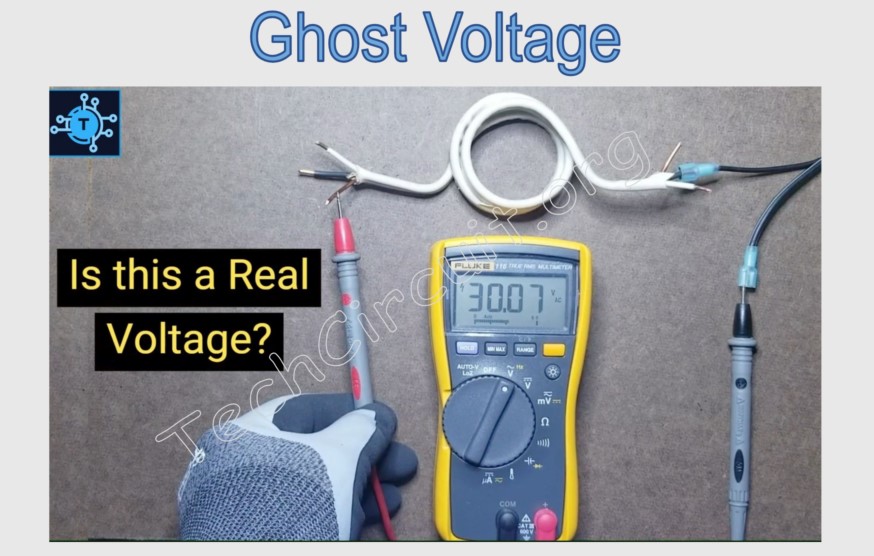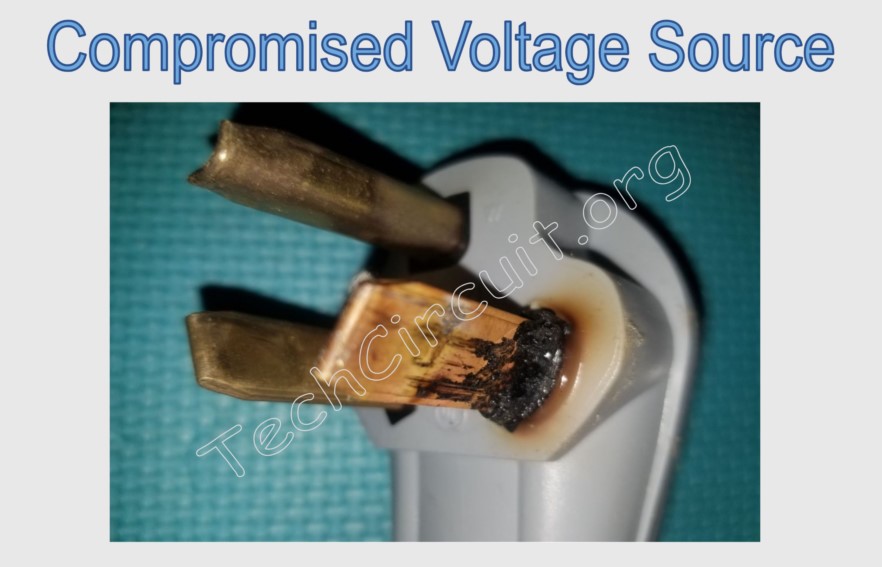
Disclaimer:
THIS BLOG IS INTENDED FOR APPLIANCE TECHNICIANS ONLY. ALWAYS USE APPROPRIATE SAFETY PRECAUTIONS WHEN WORKING WITH ELECTRICITY. THIS BLOG IS FOR INFORMATIONAL PURPOSES ONLY. IF YOU CHOOSE TO UTILIZE THE CONCEPTS IN THIS BLOG, YOU DO SO AT YOUR OWN RISK. THE AUTHER ASSUMES NO RESPONSIBILITY OR LIABLIITY FOR ANY ERRORS OR OMISSIONS IN THE CONTENT OF THE BLOG.
What is a Ghost Voltage?
A “ghost voltage” is an electrical potential that appears on an unconnected or undefined conductor, typically caused by capacitive coupling with nearby conductors or electromagnetic induction. It has minimal capacity to deliver current and often vanishes when a load is applied.

Additionally, ghost voltages may register on conventional digital voltmeters due to their high-input impedance, which may not effectively dissipate the ghost voltage. In general, a “ghost voltage” is a voltage that appears on a conductor when it shouldn’t.
A Ghost Voltage Demonstration is available at https://youtu.be/gAHjc3EE0cM
What is a Compromised Voltage Source?
When we refer to something as being “compromised,” it generally means it is no longer functioning at its full capacity or as originally intended. This concept applies to voltage sources as well. Voltage sources can vary in strength—some are robust and capable of delivering significant current, others are moderate, and some are relatively weak. Yet, as long as they are operating within their design parameters, we can reliably predict their behavior, understand their intended applications, and use them effectively without concern.

But what happens when a voltage source deviates from its expected performance? For instance, if a voltage source that is designed to supply a specific amount of current suddenly fails to do so, it can no longer fulfill its intended role. This inability to provide the required current is often due to upstream loose connections that render it a compromised voltage source. Such a scenario can lead to unexpected results, disrupt applications dependent on that source, and necessitate troubleshooting or repair to restore functionality. Thus a “compromised voltage source” is where voltage should appear on a conductor, but fails to do so when the expected load is placed on it.
Here is a video demonstration of a compromised voltage source: https://youtu.be/A1sHIHd_2so
What is the Difference between a Ghost Voltage and a Compromised Voltage Source?
Understanding the distinction between a ghost voltage and a compromised voltage source is essential in diagnosing electrical systems and ensuring their proper function. Although both phenomena involve voltage irregularities, their causes, behaviors, and implications differ significantly. In fact, compromised voltages sources are often mistakenly referred to as ghost voltages.
A ghost voltage is an unintended electrical potential that appears on an unconnected or undefined conductor. This phenomenon typically arises due to capacitive coupling or electromagnetic induction from nearby energized conductors. Ghost voltages are deceptive because they may appear significant on a digital voltmeter, particularly one with a high-input impedance, yet they possess almost no capacity to deliver current. This lack of current-driving capability becomes evident when a load is applied, as the ghost voltage often dissipates entirely. Essentially, ghost voltages occur when voltage is present where it shouldn’t be and are more a byproduct of electrical interference than a true power source.
In contrast, a compromised voltage source refers to a legitimate voltage source that is no longer functioning as intended. While a properly operating voltage source can reliably deliver a specified amount of current to power its intended applications, a compromised source fails to do so. This failure might stem from internal faults, degraded components, or upstream loose connections. Unlike ghost voltages, which are transient and superficial, a compromised voltage source represents a more significant problem, as it directly affects the performance of the system it powers. For example, when a voltage source cannot maintain its output under load, it disrupts connected devices and necessitates repair or some sort of intervention to restore its current-supplying capabilities.
In essence, while a ghost voltage is an illusory electrical potential with no practical significance (but potential safety issues), a compromised voltage source is a genuine issue that impacts the functionality of an electrical system. Understanding these differences is critical for troubleshooting and ensuring reliable system performance.
Quiz
Test your Knowledge of Ghost Voltages vs. Compromised Voltage Sources
Understanding the Difference Between Ghost Voltages and Compromised Voltage Sources
Select the best answer for each question. Some questions may include "all of the above" or "none of the above" as options.
Conclusion
In conclusion, distinguishing between ghost voltages and compromised voltage sources is crucial for anyone working with electrical systems. Ghost voltages are transient, harmless phenomena that arise from electrical interference and lack the ability to drive current, often misleadingly appearing on sensitive digital voltmeters. On the other hand, compromised voltage sources represent a tangible issue where an otherwise reliable power source fails to meet its designed current output, potentially disrupting operations and necessitating corrective action.
By recognizing the key differences—ghost voltages as unintended illusions and compromised sources as actual performance failures—technicians can better diagnose, address, and resolve electrical irregularities. This understanding not only enhances system reliability but also promotes safer and more efficient electrical troubleshooting practices.
Don’t forget:
“Diverting 10 min/day of social media time towards learning something new, is 5 hours of newfound monthly knowledge.” – SM
To DONATE to the Tech Circuit – CLICK HERE
Alphabetical Links to all Tech Circuit Articles and Blogs – CLICK HERE
Links to all Tech Circuit Cheat Sheets/Field References for Appliance/HVAC Techs – CLICK HERE
For additional electrical and electronics learning material for field techs, visit the following links:
Homepage at http://www.TechCircuit.org
Facebook group at: https://www.facebook.com/groups/746823709133603
Youtube Channel: https://www.youtube.com/@TheTechCircuit
We are a participant in the Amazon Services LLC Associates Program, an affiliate advertising program designed to provide a means for us to earn fees by linking to Amazon.com and affiliated sites.
